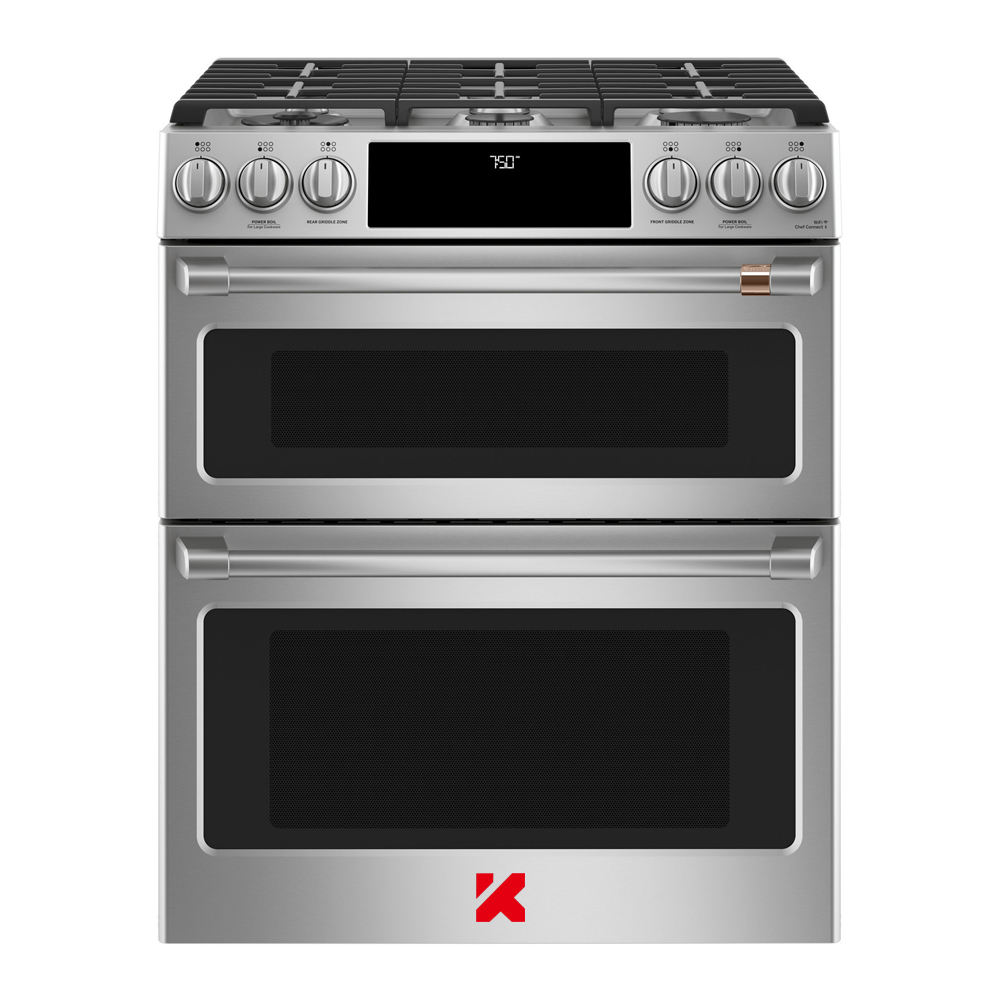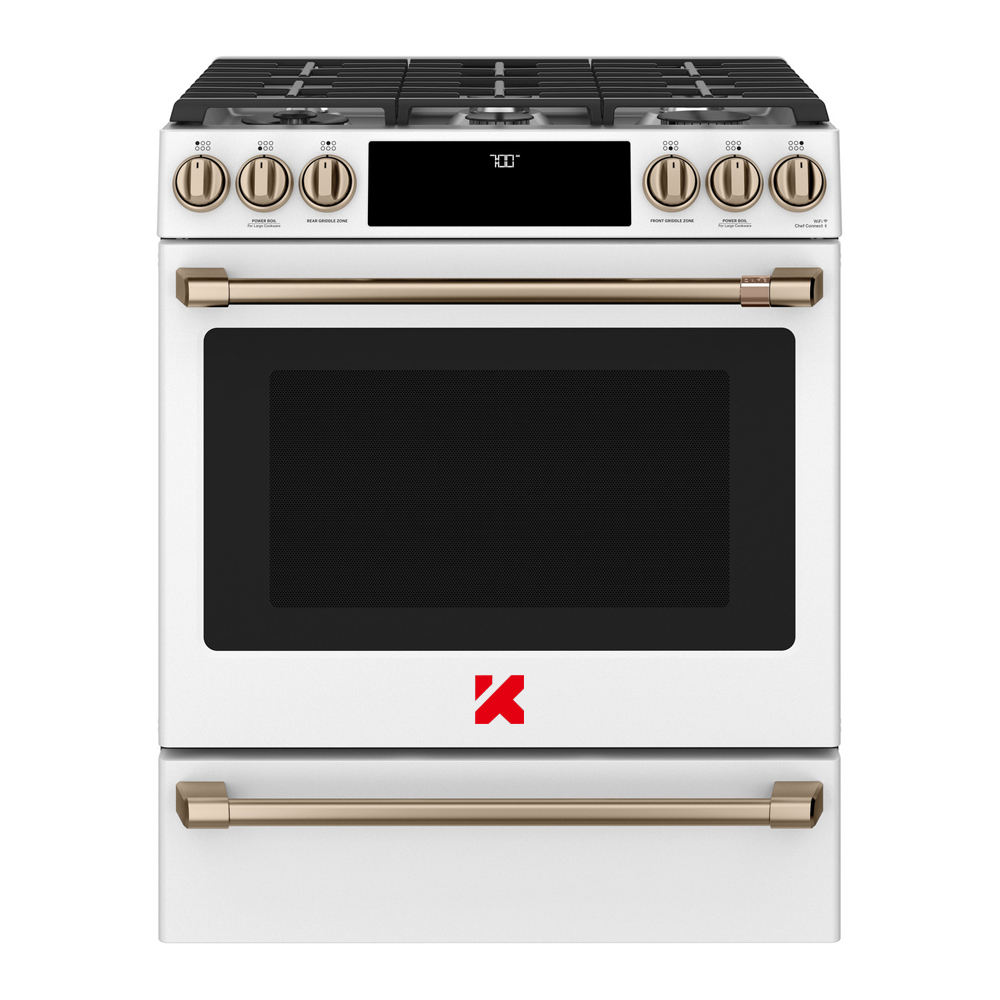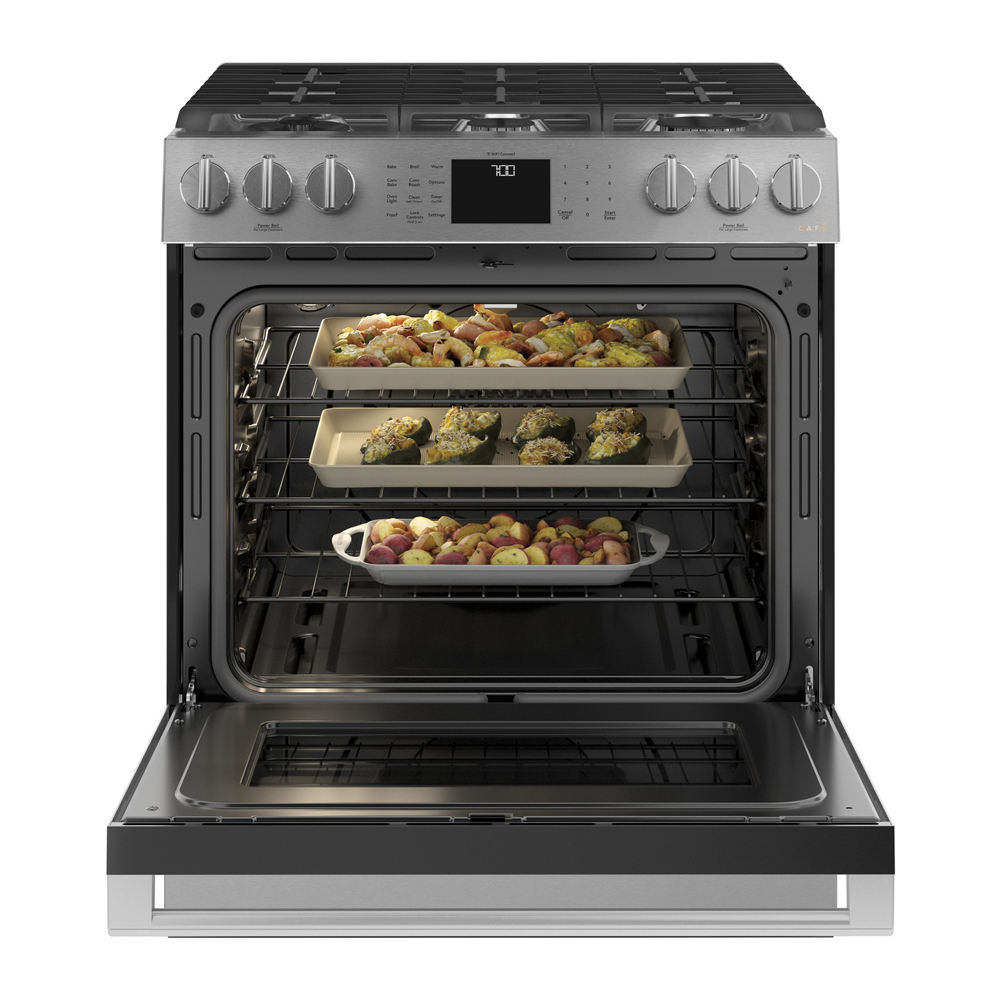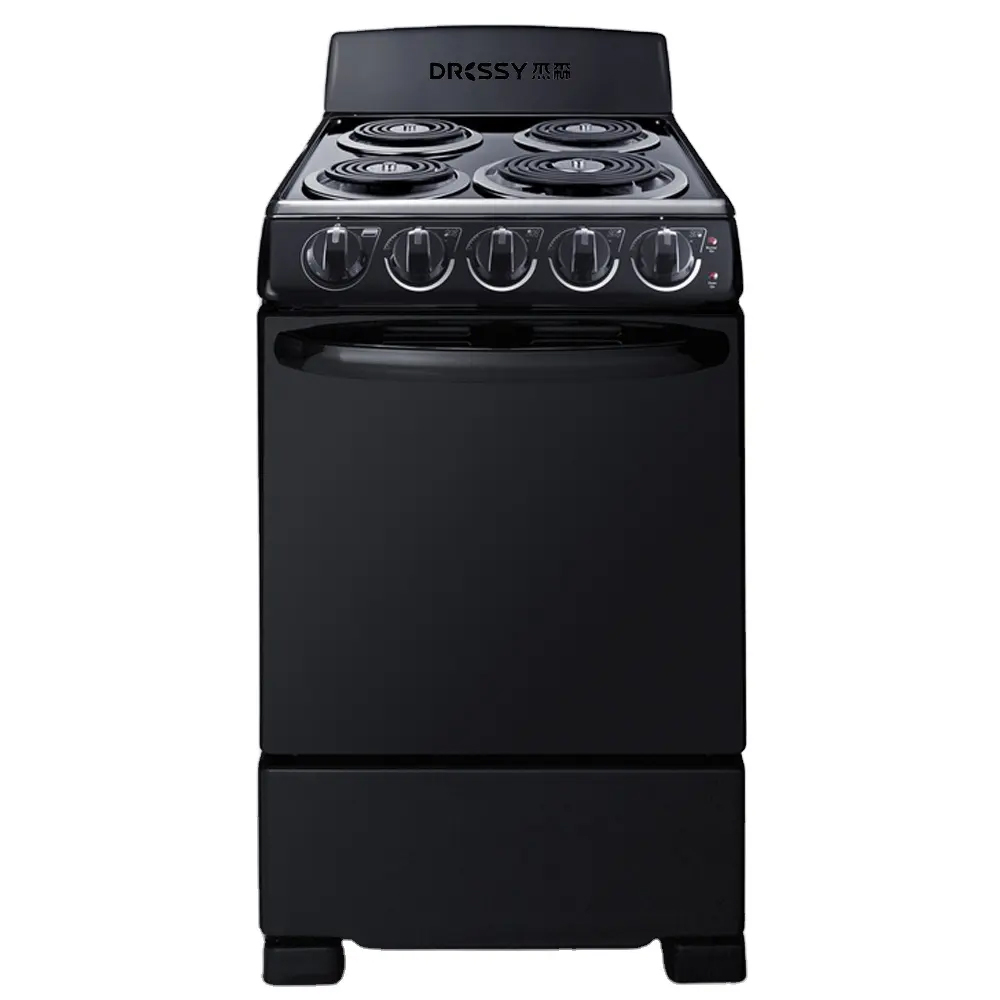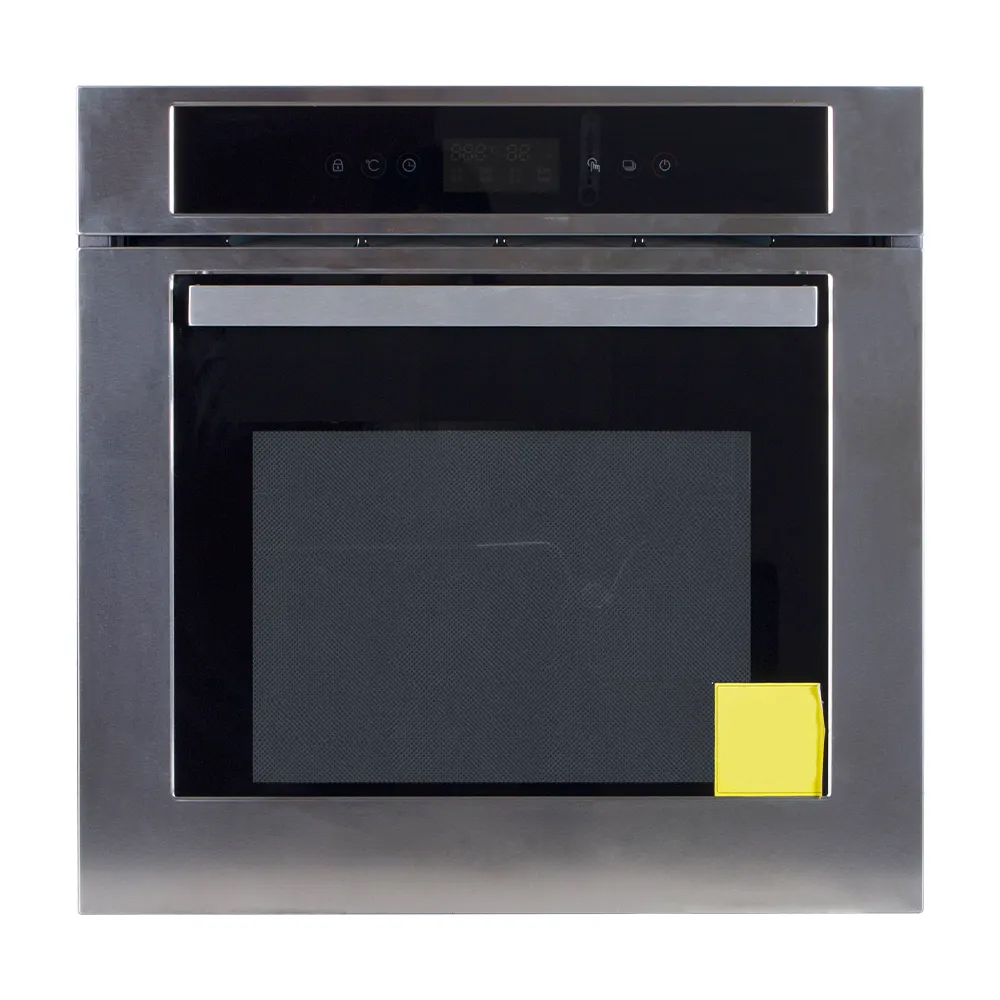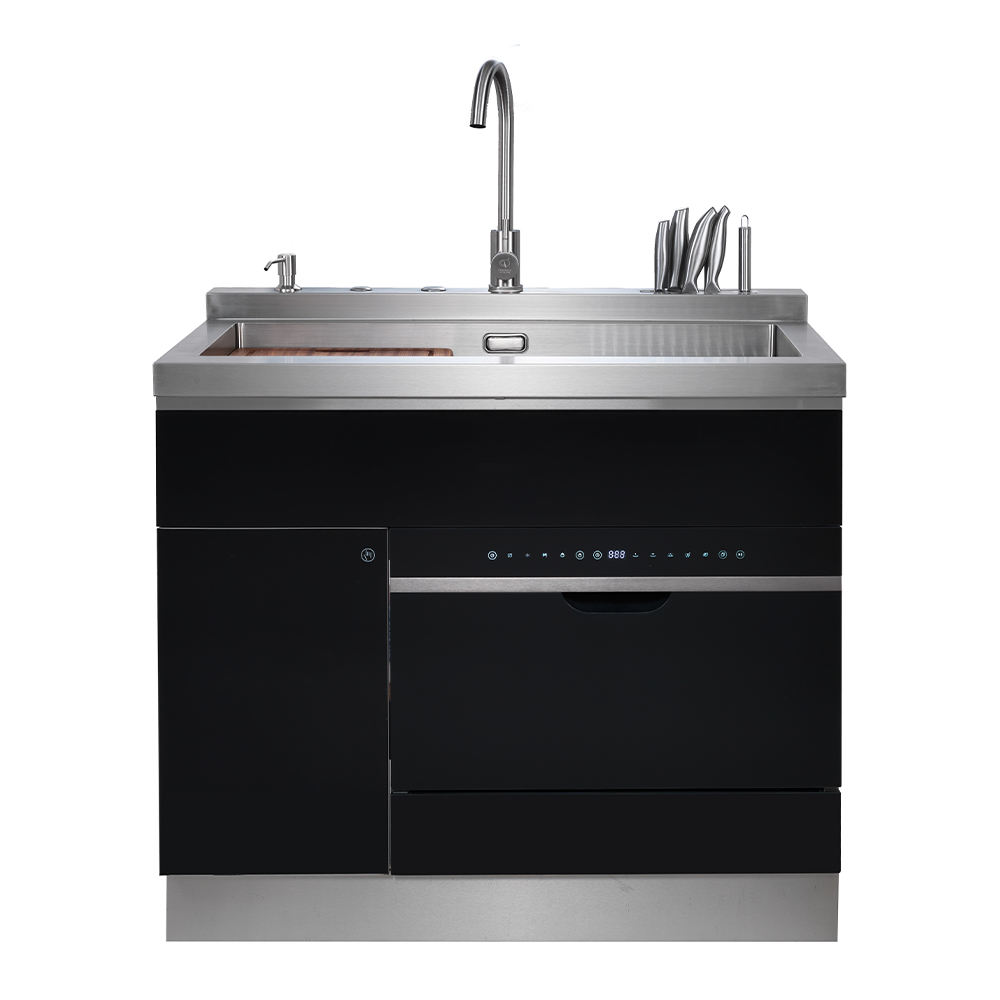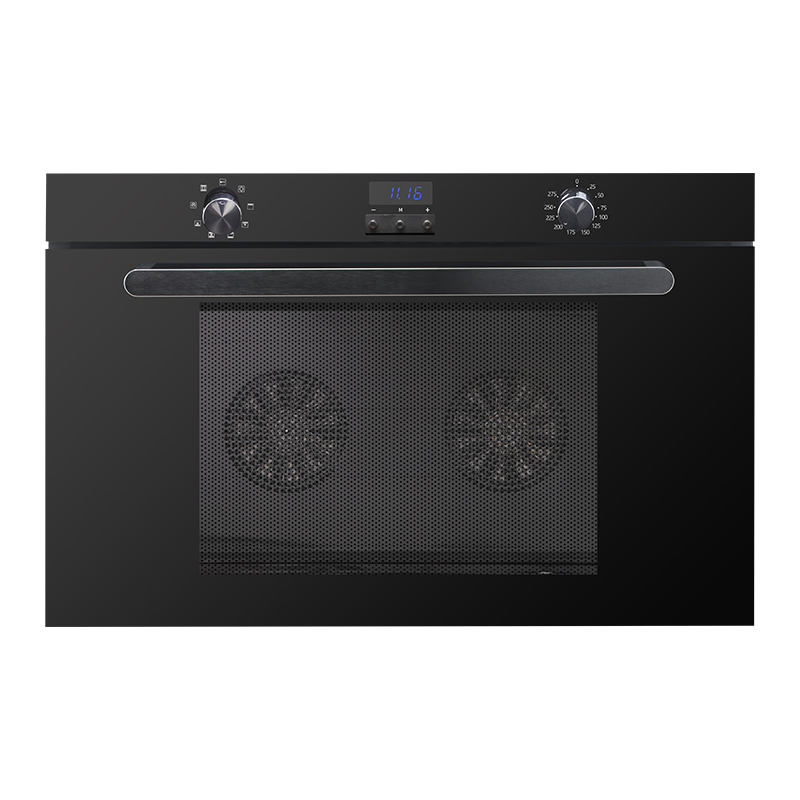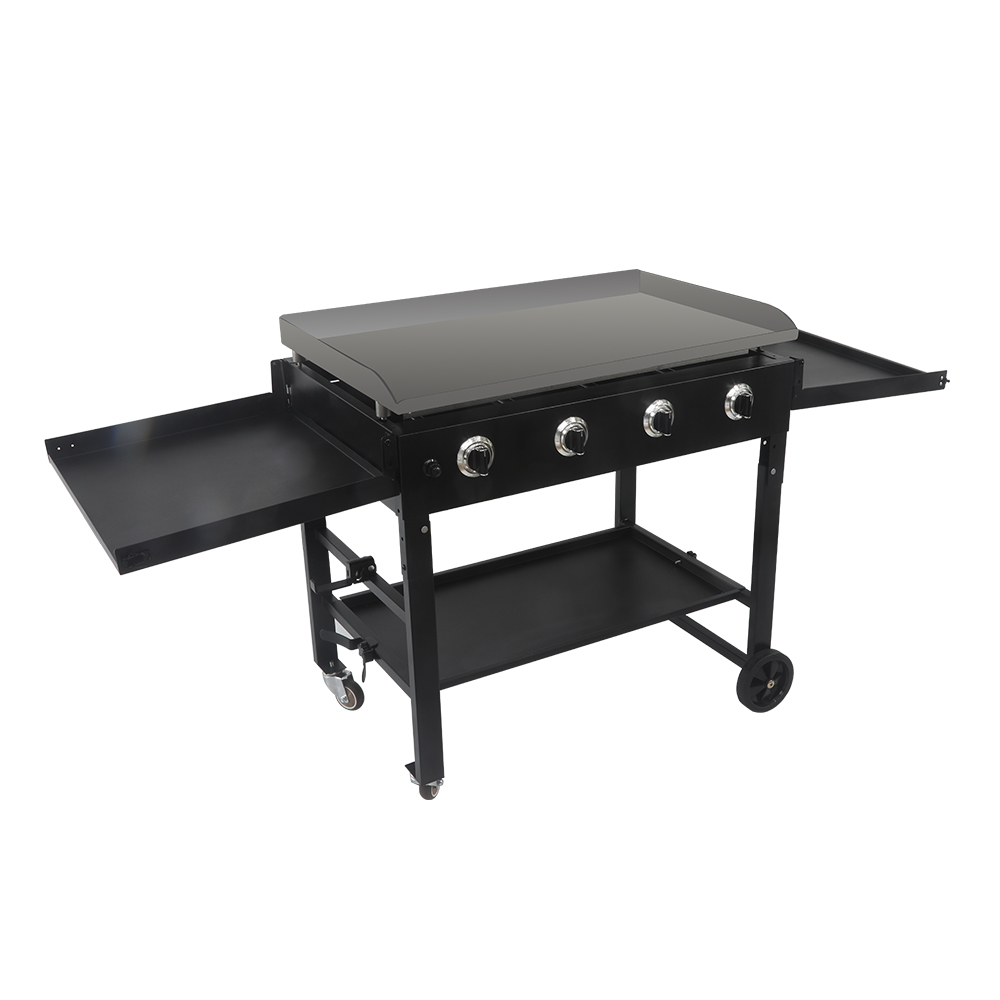- Chapter 1: The Heart of the Modern Kitchen - Overview of Built-in Ovens
- Chapter 2: Built-in Electric Oven Detailed Guide
- Chapter 3: Wall-Mounted Electric Oven Detailed Guide
- Chapter 4: Steam Wall Oven - The King of Multifunctional Cooking Centers
- Chapter 5: Operation, Cleaning, and Safety Guide
- Chapter 6: Unlocking Potential - Recipe Ideas and Applications
- Chapter 7: Smart Choices - Purchasing Decision Guide
- Chapter 8: Professional Terminology Explained
- Chapter 9: Frequently Asked Questions (FAQ)
Chapter 1: The Heart of the Modern Kitchen - Overview of Built-in Ovens
1.1 The Rise of Built-in Kitchen Appliances
- Master of Space Optimization: Seamlessly integrates into cabinetry lines, eliminating protrusions, freeing up valuable countertop space, and creating a clean, cohesive, high-end integrated kitchen aesthetic (especially beneficial for small spaces).
- Paragon of Professional Integration: Deeply integrated with cabinetry, facilitating smooth cooking workflows (prep → cook → clean), and serving as a core element of overall kitchen design.
- Tool for Value Enhancement: Significantly enhances the modern, technological appeal and overall property value of the kitchen.
1.2 Core Product Categories Explained
- Built-in Electric Oven: The mainstay of cooking. Standard dimensions (typically W×H×D: 60cm × 60cm × 55cm), flexibly installed under countertops or in mid-height cabinets (customization required). Provides stable and reliable top/bottom heating for baking.
- Electric Wall Oven: The expert in space utilization. Installed at an ergonomic height (typically chest level), eliminating the need to bend over. Single or double-layer designs (Stack Wall Oven), larger capacity (single layer: 5-6 cu. ft., double-layer: 10+ cu. ft.), ideal for large families or entertaining.
- Steam Wall Oven: The multifunctional cooking hub. High-end models are typically wall-mounted. Features an integrated steam generator, enabling modes like pure steam, steam-assisted baking (moist baking), and high-temperature steam roasting for healthier, more diverse, and professional cooking results.
1.3 Quick-Reference Comparison Table
| Feature | Built-in Electric Oven | Electric Wall Oven | Steam Wall Oven |
|---|---|---|---|
| Primary Installation Location | Under countertop or mid-height cabinet | Mid-height wall cabinet (higher than built-in) | Mid-height wall cabinet (higher than built-in) |
| Ergonomics | Requires bending (under-counter install) | Standing operation, no bending | Standing operation, no bending |
| Typical Capacity Range | 3.0 - 5.0 cu. ft. | Single: 4.5 - 6.0+, Double: 10+ | 4.5 - 6.0+ cu. ft. (single cavity) |
| Core Heating Method | Top/bottom heating elements (with or without fan) | Top/bottom heating elements + convection fan (mainstream) | Top/bottom heating elements + convection fan + steam generator |
| Signature Functions | Basic/convection baking | Powerful convection baking | Pure steam, steam-assisted baking, high-temperature steam roasting |
| Cooking Characteristics | Traditional baking | Faster and more even | More tender, juicier, fluffier, healthier |
| Cleaning Difficulty | Standard | Standard | Steam self-cleaning significantly simplifies cleaning |
| Price Range (Relative) | $$ | $$$ | $$$$+ |
| Ideal User | Compact kitchens, basic baking needs | Large kitchens, efficiency and capacity | Cooking enthusiasts, health and professional results |
Chapter 2: Built-in Electric Oven Detailed Guide
2.1 Definition and Core Positioning The built-in electric oven is the foundational cooking module of a modern kitchen, providing professional baking and grilling capabilities. It is ideal for home baking (bread, cakes, cookies) and everyday roasted or baked dishes.
2.2 Specifications and Installation
- Standard Dimensions: Width is typically 60cm (European standard), height around 60cm, and depth usually 55cm (allow for ventilation space). Always measure cabinet openings and depth (accounting for rear sockets and ventilation distance) before purchase.
- Installation Key Points:
- Location Choice: Under-counter installation is most common; mid-height cabinet installation improves accessibility.
- Electrical Requirements: Must have a dedicated circuit! Typically requires at least 220V/240V, 30A or higher.
- Ventilation and Heat Dissipation: The cabinet interior must have sufficient space (especially above and behind), strictly following the manual to prevent overheating damage to the appliance or cabinetry. Ensure bottom or front ventilation openings remain unobstructed.
- Load-Bearing: Ensure the installation frame or cabinet base can stably support the oven's weight (typically 30-50 kg).
2.3 Core Structure and Functions
- Heating System:
- Top Heating Element (Broil Element): Located at the top of the cavity, provides intense radiant heat for grilling, caramelizing, or browning foods like pizza or soufflés.
- Bottom Heating Element (Bake Element): Located at the bottom, the primary heat source for baking, providing stable rising heat.
- Rear Fan (Convection Fan - exclusive to convection models): Forces hot air circulation, significantly improving thermal efficiency (faster heating) and temperature uniformity, enabling multi-rack baking with even browning and shorter cooking times (reduce temperature by ~15-25°C). A key differentiator between basic and advanced models.
- Hidden/Enamel-Coated Heating Elements: Easier to clean and less prone to oil splatter damage.
- Precise Temperature Control System:
- Electronic vs. Mechanical Control: Electronic control (digital display) is far more accurate than mechanical knobs (±5°C vs. ±15°C or higher), crucial for baking success.
- Multi-Point Temperature Sensors: Monitor temperatures at different points in the cavity, dynamically adjusting heating element power via a microprocessor to maintain stable set temperatures.
- Cavity Design and Materials:
- Materials: Stainless steel (durable, easy to clean, modern), enamel (classic, scratch-resistant, more color options), catalytic enamel/special ceramic coatings (breaks down grease, strong self-cleaning).
- Rack Rails: Heavy-duty rails (stable for trays), telescopic rails (easy access for heavy items), number of racks (typically 3-5).
- Door Design:
- Insulation: Multi-layer glass (typically 2-4 layers), effectively reduces surface temperature (<45°C), prevents burns, and minimizes heat loss.
- Hinges: Drop-down or side-opening.
- Auto-Close Function: Light push ensures a tight seal for safety.
- Lighting: Bright, heat-resistant LED lights for observing food without affecting cavity temperature.
2.4 Primary Cooking Modes
- Traditional Baking (Bake): Primarily bottom heat, suitable for most cakes, cookies, bread, casseroles, etc.
- Grilling (Broil/Grill): Top heating element at full power, used for browning meat, melting cheese, or charring vegetables. Requires close monitoring to avoid burning.
- Convection Baking (Convection Bake): Bottom heat + fan, efficient and even, the ideal mode.
- Convection Grilling (Convection Broil): Top heat + fan, more thorough heat circulation, suitable for larger cuts of meat.
- Defrosting (Defrost): Uses fan or minimal heat to thaw food.
- Keep Warm (Keep Warm): Maintains dish temperature at low heat.
2.5 Advantages and Limitations
- Advantages:
- Professional Baking Results: Far superior to countertop toaster ovens or microwave grilling.
- Space Integration: Perfectly blends into the kitchen.
- Moderate Capacity: Meets everyday family needs.
- Stability and Durability: Professional design, long lifespan.
- Limitations:
- Relatively Limited Functions: Primarily focused on dry heat baking/grilling.
- Preheating Time: Requires time to reach set temperature (5-15 minutes).
- Operation Position: Under-counter installation requires bending.
2.6 Key Purchasing Considerations
- Capacity: Choose based on family size and cooking habits (3.5-5 cu. ft. is standard).
- Convection Function: Highly recommended! Significant improvement in results.
- Temperature Control Precision: Electronic control is preferred, especially for baking.
- Cavity Material and Cleaning: Ease of cleaning is critical (stainless steel, high-quality enamel, special catalytic coatings).
- Safety Features: Child locks, automatic shut-off, overheating protection, and cool-door design are essential.
- Brand and After-Sales Service: Mainstream brands (e.g., Bosch, Siemens, Miele, GE, KitchenAid, Fotile, Robam) offer better quality, technology, and support.
Chapter 3: Wall-Mounted Electric Oven Detailed Guide
3.1 Definition and Core Value Wall-mounted electric ovens elevate cooking space to a comfortable operating height, typically installed at chest level on walls or custom tall cabinets. They inherit all core functions of standard built-in ovens (baking, grilling, convection) while offering greater capacity (especially double-layer models) and ergonomic operation.
3.2 Specifications and Installation
- Dimensions: Single-layer width is typically 60cm or 76cm (American standard), height around 60cm. Double-layer combinations can reach 90-120cm in height. Depth is similar to built-in models (~55cm). Precise measurement of installation space and electrical setup is critical.
- Installation Key Points:
- Height: Control panel centerline should be 10-15cm below the user's standing elbow height (typically 110-130cm from the floor) for optimal visibility and comfort.
- Structural Requirements: Wall or cabinet frame must be sturdy enough to support the oven's weight (single-layer: 40-60 kg, double-layer: heavier). Reinforcement may be needed.
- Electrical Requirements: Same as built-in ovens, must have a dedicated circuit (220V/240V, 30A+). Double-layer ovens often require two dedicated circuits (one per layer) or a higher-capacity circuit.
- Ventilation: Surrounding installation space (especially above, behind, and sides) must strictly follow the manual's ventilation requirements (typically >50mm above, >30mm sides, >50mm behind). Ensure bottom vents are unobstructed.
- Professional Installation: Highly recommended for safety and stability.
3.3 Enhanced Core Functions
- Large Capacity:
- Single-Layer (~5-6 cu. ft.): Easily accommodates large turkeys or multi-rack baking (with convection).
- Double-Layer Combination: Flagship configuration, offering unparalleled capacity (10+ cu. ft.) and flexibility (independent mode/temperature settings for each layer, cooking multiple dishes simultaneously).
- Advanced Convection System: Standard powerful convection fan. Some high-end models feature dual fans (top + rear) or special airflow designs for stronger, more even air circulation.
- Upgraded Precise Temperature Control: Commonly uses high-precision electronic control (±3-5°C), some models include cavity temperature probes (accurate food core temperature measurement).
- Premium Cavity: Wider use of easy-clean stainless steel, efficient catalytic enamel, or professional ceramic coatings.
- Versatile Rack System: Heavy-duty slides, removable slides, adjustable rack positions.
- Enhanced Lighting: Brighter, wider-coverage LED lights.
- Smart Connectivity (High-End Models): Wi-Fi-enabled, remote preheating, monitoring, alerts via app, recipe downloads, and one-touch cooking.
3.4 Cooking Modes and Applications
- Covers all built-in oven modes (bake, grill, convection bake/grill, defrost, keep warm).
- Double-Layer Independent Control: Simultaneous cooking with different modes/temperatures (e.g., roast chicken above, vegetables below; keep warm above, bake dessert below).
- Large-Capacity Applications:
- Large gatherings: whole turkeys, hams, leg of lamb.
- Multi-rack baking: cookies, macarons, rolls (requires strong convection).
- Large casseroles or lasagna trays.
3.5 Advantages and Considerations
- Core Advantages:
- Ultimate Ergonomics: Stand-and-operate, no bending, easier and safer food handling.
- Large Capacity and Flexibility: Single-layer meets family needs; double-layer is the ultimate solution for large households or cooking enthusiasts.
- Professional Performance Upgrade: Typically features stronger convection and higher-precision temperature control.
- Space Planning Freedom: Frees up under-counter space for dishwashers, microwaves, or extra storage.
- Key Considerations:
- Higher Cost: Single-layer prices exceed comparable built-in models; double-layer significantly more.
- More Complex Installation: Strict requirements for wall/cabinet strength, electrical setup, and ventilation.
- Space Requirements: Requires suitable wall or tall cabinet space, may need custom cabinetry.
Chapter 4: Steam Wall Oven - The King of Multifunctional Cooking Centers
4.1 The Revolutionary Significance of Steam Cooking Steam ovens integrate high-performance steam generators, expanding dry-heat baking into the vast realm of moist cooking. They perfectly combine traditional baking with professional steaming for healthier, juicier results. Their core value lies in precise humidity control, rewriting the physics of food preparation.
4.2 Core Technology and Working Principles
- Steam Generator (Boiler): The heart. Typically a sealed, independent boiler (superior to open evaporation trays), rapidly heating water to high-temperature steam (100°C+). High-power (>1500W) boilers ensure ample steam production and pressure.
- Precision Steam Injection System: Controlled valves inject steam as needed. High-end models enable multi-stage injection, precisely adjusting humidity at different cooking stages.
- Humidity Sensor: Monitors cavity humidity (%RH), dynamically regulating steam injection via a microprocessor for stable, precise humidity.
- Combined Heating System:
- Top/bottom heating elements (hidden to prevent corrosion).
- Powerful convection fan.
- Steam generator.
- Synergistic modes:
- Pure Steam (100°C): Traditional steaming, gentle, even heating, preserving flavor, nutrients, and moisture.
- Steam-Assisted Baking (Convection Bake with Steam/% Humidity): Flagship mode! Injects steam (e.g., 30%, 60% RH) while baking. Steam delays surface crusting, enhancing internal moisture convection and even heating, yielding fluffier bread, juicier meat, and golden-brown results (e.g., roast chicken skin).
- High-Temperature Steam Roasting (Combi-Steam): Combines dry heat (>100°C, up to 230°C+) with short, intense steam bursts for crispy, "air-fried" textures (e.g., Peking duck skin, crackling pork) with juicy interiors. Faster (shorter preheating), less oil needed.
- Precision Low-Temperature Cooking (Sous Vide Mode - high-end models): Uses precise low heat (as low as 30°C) and steam for professional sous vide or molecular gastronomy (e.g., perfect steak core temperature).
- Proofing/Defrosting: Ideal warm, humid conditions for faster, even thawing or dough fermentation.
- Top-Tier Temperature Control: High-precision (±1-3°C) electronic control and cavity probes.
4.3 Core Function Modes Explained
Pure Steam:
- Principle: 100°C saturated steam, efficient, gentle heat transfer.
- Results: Maximizes natural flavor, color (especially greens), water-soluble vitamins, and minerals. Tender, juicy, authentic taste.
- Applications: Steamed fish/seafood (tender, no fishy taste), vegetables (crisp, vibrant), Chinese buns (fluffy, no collapse), healthy egg custard, low-fat cooking, reheating leftovers (no dryness).
Steam-Assisted Baking:
- Principle: Set bake temperature (e.g., 180°C) and steam level (e.g., 30%, 60% RH). Steam delays surface drying early on, promotes Maillard reaction (better browning/flavor), and maintains internal moisture.
- Results:
- Bread: Better rise (strong oven spring), thin/crispy crust (not thick/hard), moist, open crumb (perfect baguettes), slower staling.
- Meat: Golden, crispy skin, juicy interior (chicken, pork knuckle, steak).
- Cakes/Desserts: Finer, moister texture (cheesecake, sponge), less cracking/collapse.
- Gratin/Lasagna: Cheesy top, moist inside.
- Applications: Nearly all traditional baking benefits from added steam.
High-Temperature Steam Roasting:
- Principle: High heat (190-230°C) + intense steam bursts (not continuous). Steam rapidly removes surface moisture while intense heat creates Maillard reaction.
- Results:
- Ultra-Crispy Skin: Rivals deep-frying or high-heat roasting (Peking duck, crackling pork, fries).
- Juicy Inside: Steam protects interior moisture.
- Faster: Quick preheating (steam-assisted), shorter cooking times.
- Healthier: Less oil required.
- Applications: Crispy-skinned meats, root vegetables, "fried" foods with less oil.
Precision Low-Temperature Cooking:
- Principle: Exact low heat (e.g., steak at 55°C, salmon at 45°C) + near-100% RH steam for sous vide effect.
- Results: Food reaches exact core temperature throughout, perfect doneness uniformity, tender proteins (e.g., melt-in-your-mouth steak).
- Applications: Premium steak, lamb, salmon, chicken breast (no dryness), vegetables (perfect texture).
Proofing/Defrosting:
- Proofing: Ideal conditions (e.g., 35°C, 80% RH) for faster, stable dough rise, better flavor/texture.
- Defrosting: Warm, humid environment speeds thawing, minimizes juice loss/bacterial risk.
4.4 Steam Oven Advantages
- Healthier Cooking: Less oil/salt, maximizes natural nutrients/flavor.
- Superior Texture: "Crispy outside, juicy inside" is no longer a paradox.
- Efficiency: Steam speeds preheating; high-temperature roasting is faster; multi-rack cooking is more even.
- Space-Saving Integration: Replaces steamers, air fryers, sous vide machines, proofers, thawers, saving kitchen space and appliance costs.
- Easy Cleaning:
- Steam Self-Cleaning: Key feature! Runs pure steam (90-100°C) for 30-60 minutes, loosening grease for easy wiping.
- Cavity Materials: Premium stainless steel or easy-clean coatings.
4.5 Purchasing and Usage Tips
- Steam Generator Type: Sealed boiler (Boiler) > open evaporation tray (Drip Tray). The latter lacks power, steam volume, precision, and is prone to scaling.
- Max Steam Temperature/Power: Affects speed and effectiveness (e.g., steaming large ingredients). Boiler power should be ≥1500W.
- Humidity Control Precision/Range: Ability to set/maintain specific humidity (e.g., 30%, 50%, 100%). Humidity sensors should be standard.
- Water Tank Capacity/Accessibility: Large external tanks (>1L) are more practical, allowing refills without interrupting cooking. Models with low-water alerts or direct water line connections are better.
- Cleaning Ease: Steam self-cleaning is a must! Cavity materials (seamless stainless steel is best), drainage (auto-evaporation or manual), and accessibility matter.
- Water Quality: Only use distilled, demineralized, or softened water! Tap water minerals cause scale, clog nozzles, and damage the boiler, reducing performance/lifespan. Some models include water softeners.
- Adapting Usage Habits: Experimentation and recipe adjustments are needed to master different modes (e.g., bread baking).
Chapter 5: Operation, Cleaning, and Safety Guide
5.1 General Operating Guidelines
- Read the Manual: Controls vary by brand/model.
- Preheat Fully: Wait for the set temperature (audio/visual cues) before adding food.
- Use Proper Cookware: Heat-resistant metal trays/racks (avoid sealed containers to prevent pressure buildup).
- Avoid Blocking Vents: Ensure proper airflow around the oven.
- Opening During Cooking: Significantly lowers cavity temperature (especially in convection/steam modes), extending cooking time. Use the light to observe.
- Utilize Accessories: Trays, racks, thermometers, etc.
5.2 Deep Cleaning and Maintenance
- Daily Cleaning: After cooling (lukewarm), wipe the cavity, door seal, and glass with a soft cloth/sponge to remove residue. Use oven cleaner for stubborn stains (avoid harsh chemicals!), then rinse thoroughly.
- Periodic Deep Cleaning:
- Steam Ovens - Steam Self-Clean: Run monthly, add water, follow the program, then wipe away residue.
- Electric Ovens - High-Temp Self-Clean:
- Pyrolytic: Heats the cavity to ~500°C, reducing grease to ash (takes 2-4 hours, energy-intensive, ensure ventilation, keep flammables away).
- Catalytic: Special coatings break down grease at 140-200°C (requires periodic panel replacement).
- Manual Cleaning: Remove racks/slides for separate washing. Avoid excessive water near electrical parts.
- Door Seal Cleaning: Keep seals clean/pliable for proper sealing.
- Door Glass Cleaning: Clean each layer separately; use specialized cleaners for internal haze (if visible).
- Exterior Cleaning: Wipe control panels and housing with a damp cloth (after unplugging).
5.3 Safety First
- Burn Prevention: Post-cooking, the cavity and door are extremely hot! Always use thick mitts. Keep children away!
- Fire Safety: Keep flammables (curtains, paper, wooden utensils) away. Avoid excessive grease buildup. Clean grease deposits.
- Electrical Safety: Ensure a dedicated circuit! Avoid damaged cords/outlets. Don’t operate with wet hands. If abnormal (smell, smoke, noise), unplug immediately and contact support.
- Steam Safety: When opening during steam/high-temperature modes, hot steam may escape. Open slowly, stand clear.
- Child Lock: Always enable to prevent accidental operation.
- Food Safety: Ensure food reaches safe internal temperatures (use a thermometer), especially meat/poultry.
Chapter 6: Unlocking Potential - Recipe Ideas and Applications
6.1 Built-in/Wall Oven Recipe Inspiration
- Baking Classics: Perfect sponge cake (more even with convection), crispy cookies, artisan bread (simulate steam with a spray bottle), crème brûlée.
- Meat Feasts: Juicy whole chicken (convection), herb-roasted lamb, honey-glazed ribs, lemon salmon.
- Vegetable Versatility: Roasted roots (carrots, potatoes, sweet potatoes - olive oil, herbs), broccoli, cauliflower, ratatouille.
- Easy Mains: Homemade pizza, lasagna, baked pasta, gratin.
6.2 Steam Oven Exclusive Recipes
- Pure Steam Excellence:
- Steamed Sea Bass (15min@100°C): Score the fish, add ginger/scallions, steam, then drizzle with soy sauce and hot oil. Tender like tofu, perfectly intact skin.
- Emerald Broccoli (8min@100°C): Vibrant green, crisp, nutrient-rich.
- Steam-Assisted Baking Magic:
- Baguette:
- Recipe: Flour, water, yeast, salt.
- Key: Preheat to max (230-250°C) with steam (or add water to create steam). Score before baking.
- Program: Steam-assisted bake (e.g., 230°C, initial 60% RH, later no steam). Thin, crisp crust; moist, open crumb; rich flavor.
- Juicy Thanksgiving Turkey:
- Program: Low-temp phase (e.g., 120°C) with steam (40-50% RH) to safe internal temp, then high heat (180-200°C) without steam for golden skin. Breast stays moist, legs tender.
- Baguette:
- High-Temperature Steam Roasting:
- Peking Duck Crispy Skin:
- Prep skin (scald, air-dry).
- Program: High-temp steam roast (e.g., 200°C + intense steam) 30-40 minutes. Paper-crisp skin, tender meat.
- Oil-Free Crispy Fries:
- Cut potatoes, soak to remove starch, dry.
- Program: High-temp steam roast (200-220°C) 20-25 minutes. Crispy outside, soft inside, low-fat.
- Peking Duck Crispy Skin:
- Precision Low-Temperature Cooking:
- Perfect Medium-Rare Steak:
- Season steak.
- Program: Sous vide @ 55°C (1.5-2.5 hours depending on thickness), then sear in a pan or with a torch for crust. Evenly pink, tender, juicy.
- Perfect Medium-Rare Steak:
Chapter 7: Smart Choices - Purchasing Decision Guide
7.1 Needs Assessment: Key Questions
- Cooking Frequency/Passion? Occasional baker vs. daily cook/enthusiast.
- Household Size/Entertaining? 1-2 people vs. 4+ or frequent guests.
- Core Cooking Needs? Basic baking/roasting → built-in oven. Efficiency/capacity/standing operation → wall oven. Health/diversity/professional results → steam wall oven reigns.
- Kitchen Space/Layout? Under-counter space → built-in. Free wall/custom tall cabinet → wall-mounted. Space-saving integration → steam oven.
- Budget? Built-in (entry) < wall oven < steam oven (premium).
7.2 Space and Installation Feasibility
- Measure Precisely: Installation space (W×H×D) must include ventilation gaps! Verify cabinet openings.
- Electrical Check: Can existing circuits support a dedicated line? Electrician needed? Cost estimate? Double-wall or high-power steam ovens demand more.
- Structural Strength: Is the installation spot (wall/cabinet) sturdy enough? Reinforcement needed? Professional assessment is key.
- Ventilation: Ensure adequate clearance; no flammables nearby.
7.3 Value vs. Investment
- Built-in Electric Oven: Budget-friendly for basics. Prioritize convection and easy cleaning.
- Wall Oven: Premium for comfort and capacity. Double-layer boosts flexibility/output.
- Steam Wall Oven: Highest upfront cost but delivers unmatched functionality, health benefits, efficiency, and culinary creativity. Consider space/appliance savings and long-term value for health-conscious cooks.
Chapter 8: Professional Terminology Explained
- Convection: Fan-forced hot air circulation for faster, more even cooking.
- Steam-Assisted Baking: Controlled steam injection during baking for better texture/browning.
- High-Temperature Steam Roasting: Combines intense dry heat and steam bursts for crispiness.
- Steam Generator (Boiler): Independent steam-producing unit (preferred).
- Humidity (%RH): Relative humidity percentage, precisely adjustable in steam ovens.
- Pure Steam Mode: 100°C steam-only cooking.
- Self-Cleaning:
- Steam Self-Clean: Uses steam to loosen grease.
- Pyrolytic: Ultra-high heat burns grease to ash.
- Catalytic: Special coatings break down grease.
- Temperature Probe: Measures food's internal temperature in real time.
- Dual/Twin Independent Control: Separate settings for each oven layer.
- Low Water Sensor: Alerts when the boiler needs refilling.
- Child Lock: Locks controls to prevent accidents.
Chapter 9: Frequently Asked Questions (FAQ)
9.1 Purchasing Decisions Q1: Do average households need a steam oven? Depends: If you often steam fish/seafood/Chinese buns or seek bakery-quality bread/meat textures, it’s transformative. For basic baking/reheating, a built-in oven suffices. Health-focused cooks and enthusiasts should prioritize steam models.
Q2: Are double-wall ovens more practical than single? Dual independent control is the advantage: Simultaneous different cooking (e.g., pizza at 220°C above, soufflé at 150°C below). Ideal for large households/entertaining. But assess: ① Space (height ≥90cm) ② Electrical capacity (total power often >5000W) ③ Budget (+60-100%).
Q3: Is convection worth the extra cost? Highly recommended: Reduces temperature variance (≤10°C vs. 30°C), speeds preheating (~30%), enables multi-rack baking. Note: ① Opt for "3D heating" (some have rear ring elements) ② Lower set temps (recipe temp -20°C).
9.2 Installation & Modifications Q4: What’s needed to retrofit an old kitchen for built-in appliances? Essentials:
- Electrical: Dedicated 4mm²+ copper wire + 32A breaker (220V/240V), no sharing with other high-power devices.
- Cabinets: Openings precise to ±2mm (standard EU: 560mm W × 550mm D), base support ≥70kg.
- Ventilation: ≥50mm top/back clearance (metal heat shields recommended).
Q5: Can steam ovens go under gas stoves? Risky: ① Steam may accelerate gas line corrosion ② Combined heat sources may overheat (cavity top >90°C). If unavoidable: ① Add ≥1.5mm steel plate ② Limit stove power (≤5kW) ③ Choose front-vented steam ovens.
9.3 Usage Tips Q6: How to prevent cake cracking/collapsing? Steam oven: Use "humid bake" (30-40% RH) to delay crust formation. Regular oven: ① Reduce bottom heat 10-20°C ② Add a baking stone ③ Cover cracks with foil mid-bake.
Q7: Why isn’t my steam-roasted pork skin "blistered"? Key steps: ① Prick skin, brush with vinegar + coarse salt ② High-temp steam roast (230°C + intense steam) ③ First 20min high humidity to soften, then 20min dry heat to crisp.
9.4 Cleaning & Maintenance Q8: White streaks after steam self-clean? Likely mineral deposits: ① Wipe with citric acid (10g:500ml water) ② Use distilled water/install a softener (if supported) ③ Avoid chlorine-based cleaners.
Q9: Does pyrolytic cleaning damage the oven? Safe within design limits, but: ① High energy use (~5kWh/cycle) ② Remove all accessories (discoloration) ③ May fault if ambient >35°C.
9.5 Steam-Specific Q10: What water to use? Can tap water harm the oven? Only distilled/demineralized/softened water:
- Tap water minerals clog nozzles (0.3mm holes).
- Scale reduces efficiency (boiler power +30%).
- Damage from hard water may void warranties.
Q11: Why "knocking" sounds during steam use? Normal: ① Condensate boiling in the boiler ② Valve actuation. Abnormal: Hissing (pressure valve issue) or metal clanging (loose parts).
9.6 Safety & Troubleshooting Q12: Is a hot door (>60°C) normal? No! Should stay <45°C. Causes: ① Worn door seal (~¥300 replacement) ② Displaced insulation (professional repair).
Q13: Plastic smell after long disuse? Likely factory oils: ① Run empty steam cycles (100°C/10min) twice ② If persistent, check for overheated steam tubes (design flaw).



 中文简体
中文简体 Español
Español عربى
عربى